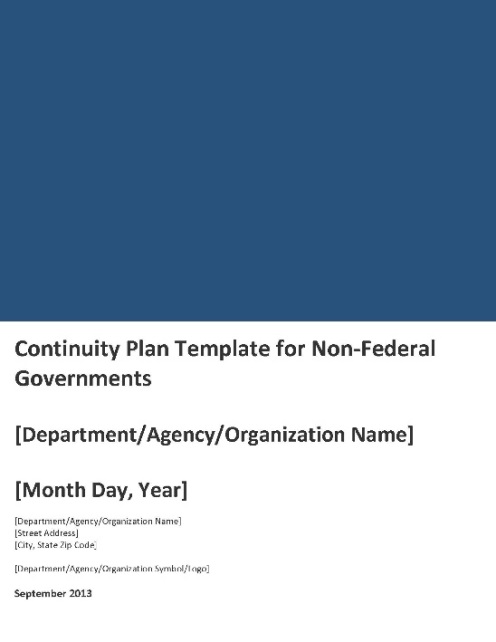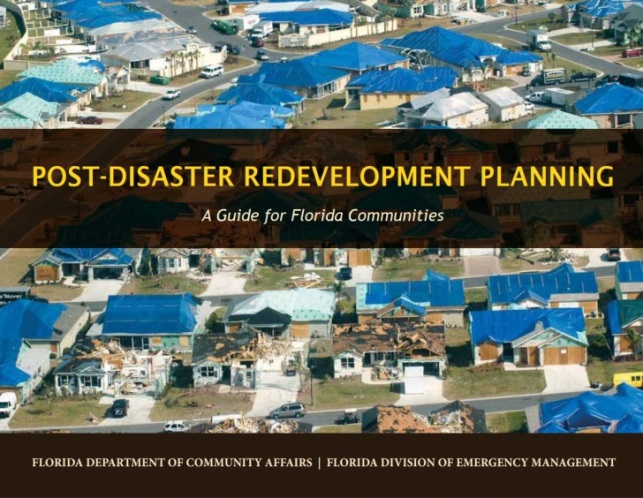Table of Contents

Pre-disaster recovery planning is an opportunity for communities to consider how they will manage important recovery issues, like how to keep the government and essential services up and running, where to locate temporary housing, how and where they will rebuild, and how to reestablish essential economic activity. Communities can, and should, take steps before being impacted by a disaster to ensure that the aftermath will not become a disastrous and chaotic situation in itself.
Pre-Disaster Recovery Plans:
Pre-disaster recovery planning is an emerging best-practice for towns, cities, and counties with a goal of building resilience to hazards, especially as some of these communities are facing the same hazards on a continual basis. There are no standard rules or templates for the development or implementation of pre-disaster recovery plans, and communities have developed their plans in different ways.
In many communities, these types of plans are developed by Emergency Management staff; however, the planner has an important role to play in the development of each of these plans. For example, planners can help establish continuity of operations procedures for the Planning Department to be included in the COOP and there are many planning/land use issues that must be addressed in pre- or post-recovery plans.
Though the recovery plan could be developed after a disaster to guide recovery decisions, these three highlighted plans should ideally be prepared in advance of a disaster. Making the investment in pre-disaster plans that address post-disaster issues will pay dividends for the communities that take the time and initiative to do the planning. These plans should be regularly revisited, especially following an event that would require activation of such plans.
In 2014, officials in Douglas County, Colorado adopted the County’s first Disaster Recovery Plan. The plan establishes the County’s comprehensive framework for managing recovery efforts following a major disaster. The plan aims to “promote mitigation and foster resilient redevelopment and reconstruction” after disasters. As described by Commissioner David Weaver:
“Having been through our own wildfires, floods, and other local emergencies, as well as having witnessed other counties navigate their own incidents, our staff had the foresight to recognize the importance of collaboration among our partners to assemble a recovery plan.” (County adopts Disaster, 2015).
The plan describes how the County will use education, incentives, and regulation to reduce vulnerability to hazards and foster more resilient land use patterns and building practices, while also deferring to existing deliberative plans like the Douglas County Comprehensive Master Plan and Hazard Mitigation Plan. The County had also previously developed a Continuity of Operations Plan that is referenced throughout the Disaster Recovery Plan. This helps emphasize the importance of having both types of plans to facilitate successful disaster preparedness and recovery efforts.
- Each of these plans can help a community more effectively and efficiently respond to disasters. These plans can inform decision-makers and reduce reactionary decisions (and thus, lead to less confusion) in the post-disaster environment.
- Pre-disaster recovery plans allow communities to discuss reconstruction policies and procedures in the less contentious and more deliberative pre-disaster environment.
- A pre-disaster recovery plan can strengthen a community’s applications for post-disaster funding, as it demonstrates a clear and carefully considered path to recovery. It also helps to ensure more rapid and effective access to state and federal recovery resources.
- Pre-disaster recovery planning helps to increase stakeholder and community involvement after a disaster by defining outreach resources and building key relationships.
- By engaging in pre-disaster recovery planning, a community can familiarize themselves with state and federal recovery resources and support structures.
- Adopting a COOP and COG puts a community in an excellent position to maintain essential leadership and services at the time of a disaster.
-
Each of these plans requires considerable coordination with multiple government departments, and often partner organizations and community members as well. Once developed, the plans will need to be “exercised” (i.e., routinely tested and communicated) so that everyone understands their roles as defined in these plans.
-
Keeping COOPs and COGs accurate and updated is imperative. Updates should be conducted consistently and thoroughly.
- As for pre-disaster recovery plans, at this time there is no dedicated federal funding source for communities seeking financial assistance in developing their recovery plan. Communities that are updating their hazard mitigation plans with PDM mitigation grant program support, however, may use the planning process to also include pre-disaster recovery planning.


